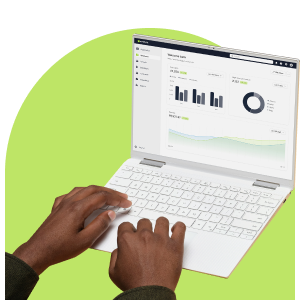Vanity URLs
Everyone has heard of a URL, and if you are reading this article you have definitely seen one. URL is short for Universal Resource Locator but in simple terms, it’s a web address; the most popular one is www.google.com.
In this three-part series, we tackle Google Analytics with UTMs, but first we need to understand the components that go into using UTMs. This first part is dedicated to Vanity URLs and how they fit into the big scheme of things.
What is a Vanity URL?
A Vanity URL is still a URL with one major difference; it’s vain. Used specifically for marketing purposes, a Vanity URL helps potential customers remember and find a specific page on your website. Google uses it for its myriad services like translate.google.com or drive.google.com.
For us regular folk, we might know this as a URL path, which is the name of the page at the end of a URL (or front in same rare cases). Vanity URL and URL path are interchangeable terms.
In Everlytic’s instance, by adding email-marketing as a vanity URL or URL path to the end of our website name, it takes you to our email marketing products page: www.everlytic.co.za/email-marketing.
The Benefits of Vanity URLs
There is a myriad of benefits to having a very specific path name at the end of your URL, let’s explore them:
Easy to remember
When marketing a particular product or service, you would want potential customers to find what you offer quickly. Adding the name of that product or service to the end of your URL does exactly that and makes it easy to remember.
For example, adding the word Menu to a restaurants website would solve so many issues: www.restaurantname.com/menu
Searching Made Easy
Carrying on from the previous point, you make web searches more effective with a Vanity URL. By typing in your business name with the service, web searches will most likely display that specific page first.
Offline Marketing
Not all marketing happens on the internet. Radio, TV, Newspaper Ads and a ton of “offline” marketing options still exist. Although your clients cannot click on a newspaper ad, they can easily remember your product or service when they do finally go online. This also applies to brochures, flyers, promotional items, even word of mouth. Wearing a T-shirt with /MyProduct, can bolster visits to your website.
Trustworthy Links
The internet can be a dangerous place. Phishing is a major concern, where hackers replicate the website of a trustworthy institution (like a bank) and convince you to log in. Only to find that said website is a clone. The best way to avoid this is to type in the actual website address, even if you get an email with a link. A Vanity URL will allow your clients to type in your web address with its easy to remember url path safely.
Sharing made easy
The fact that you can direct clients to a particular page on your website means they can do the same when sharing your website. All they have to remember is the website address and the name of the page. Even better if that name is short and sweet or a reference to a marketing campaign.
Social Media Presence
Social Media already employs Vanity URLs to anyone who signs up to them. Facebook, Twitter, Linkedin; all of these make finding a company or person easy. By adding a name to the end of their website URL, you can find anyone or any business quickly. Here are links to our social media sites employing Vanity URLs
www.twitter.com/Everlytic
www.facebook.com/Everlytic
https://za.linkedin.com/company/everlytic
Vanity URLs in Google Analytics
In our next article, we take this concept of vanity urls/url paths and compare them to UTM codes (Urchin Tracking Module) which track marketing campaigns, and how the two can be interlinked.



